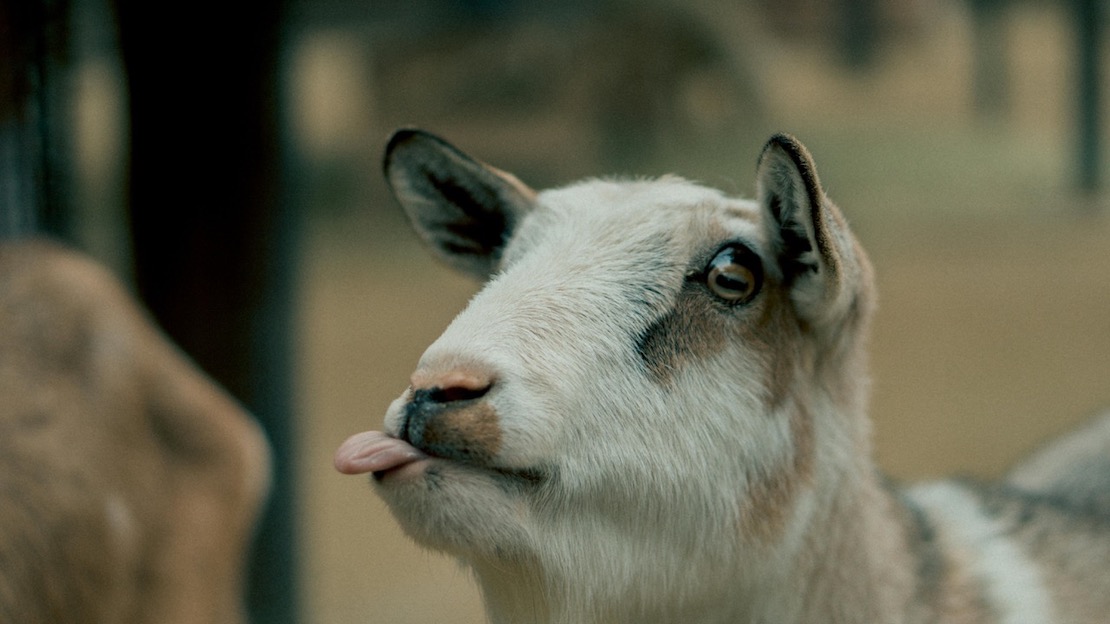A GOAT-level Breakthrough: AI Reads Goat Facial Expressions to Detect Pain

Artificial Intelligence
3-minute read
Pet owners have likely faced this scenario: seeing their furry friends looking pouty and sad-eyed, you wonder if they are unwell. However, pets can't speak and don't clearly express their needs. As you helplessly guess whether to take them to the vet or if they're just in a bad mood or hungry, this challenge in cross-species animal communication often causes anxiety.
This challenge exists not only in our daily interactions with pets but also for veterinarians. They often have to rely on experience to guess whether an animal is in pain, but this method is subjective and may not be accurate. To find a more scientific way to interpret animal pain, scientists decided to train AI to recognize animals' facial expressions. A recent study chose goats as the test subject and successfully enabled AI facial recognition to "read" their expressions of pain.
 Not the an actual goat in the study, but perhaps in the future, we might understand what this expression means? (Source: Pexels/Sơn Bờm)
Not the an actual goat in the study, but perhaps in the future, we might understand what this expression means? (Source: Pexels/Sơn Bờm)
How Does AI Interpret Goat Expressions?
This study, led by scientists from the University of Florida's College of Veterinary Medicine, was published in the journal Scientific Reports on November 7, 2024. The research focuses on using AI deep learning to automatically recognize goats' pain expressions. For this, the team collected facial images of 40 goats of different ages, breeds, genders, and health statuses, which were scored by veterinarians using the UNESP-Botucatu acute pain scale to determine which goats were in pain. Most of the "painful goats" were admitted for medical needs such as cesarean sections, amputations, or tumor removals. To provide sufficient learning data for the AI model, the team captured thousands of images for training.
The study utilized the 'VGG-16' convolutional neural network (CNN) model in deep learning to recognize goats' pain expressions. 'VGG-16' is a multi-layer structure that learns and extracts features from a large number of images, such as subtle changes in goat expressions like facial muscle tension or expression lines. These features help the model differentiate between 'pain' and 'no pain' expressions.
These features are then input into a Support Vector Machine (SVM) classifier. Based on the features extracted by 'VGG-16', the SVM further categorizes the images into 'pain' or 'no pain' classes. Simply put, 'VGG-16' identifies the detailed features of the expressions, while SVM performs the final classification.
Results: AI Accuracy Up to 80%
So, how did it perform? The research team tested the model's AI accuracy under different conditions.
When the model encountered goat images that had appeared during the training phase, the accuracy reached about 80%, showing that it could accurately determine whether a goat was in pain in familiar situations. However, when the model faced new goats it had never seen in training, the accuracy slightly dropped to around 62%. This indicates a decrease in accuracy with completely unfamiliar goats, but the overall performance remains commendable.
This study not only shows the potential of AI in recognizing animal pain but also gives a voice to animals' silent protests. As the team mentioned, "If AI can successfully read goat expressions, perhaps in the future, it could help all patients who cannot express their pain, whether they are animals, non-verbal infants, or other people in need." By developing an accurate pain recognition system, we hope to reduce animal suffering and improve animal welfare. Maybe one day, we won't just 'read' goat expressions but also unlock the inner thoughts of our house cats. After all, who wouldn't want to know what their cat is upset about?


